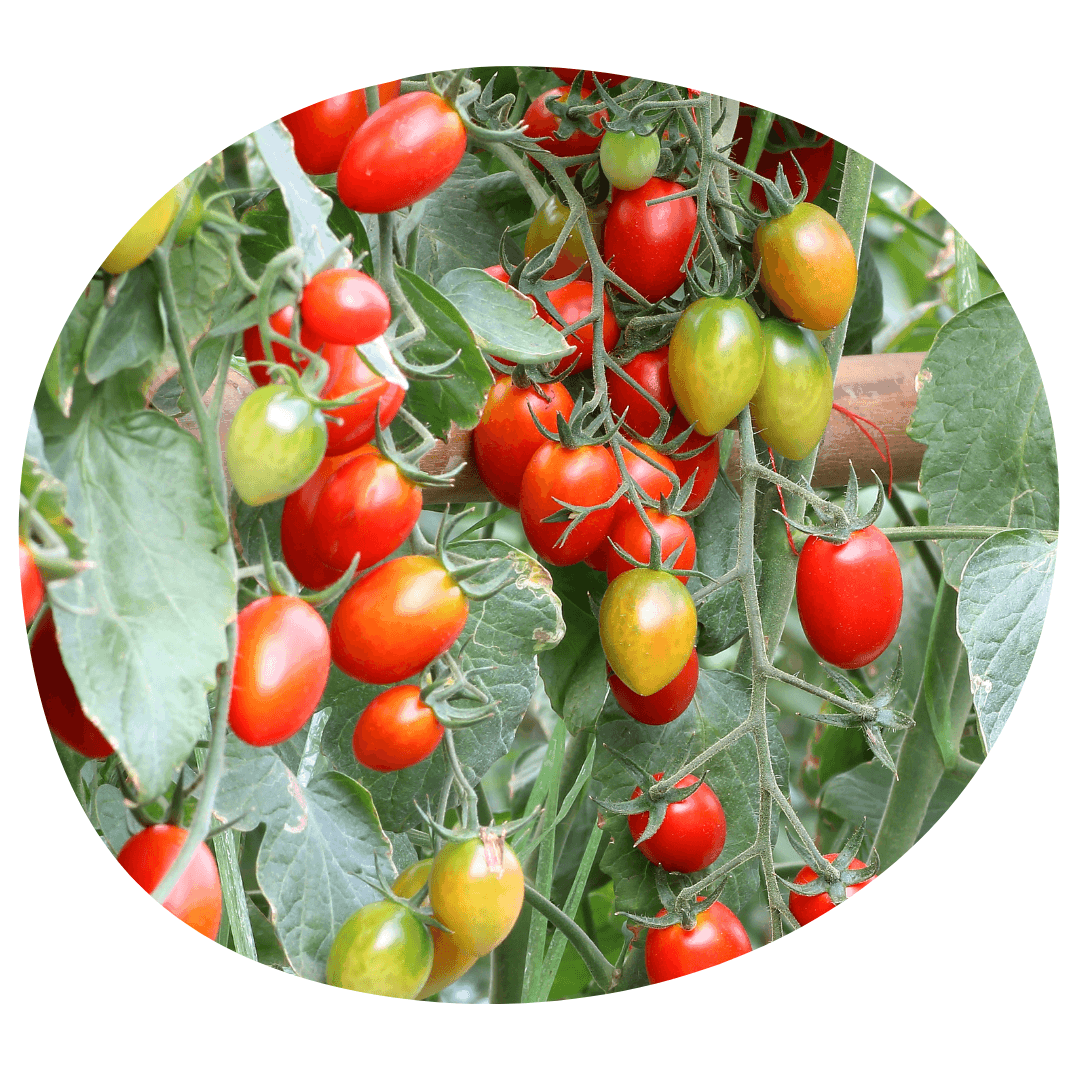How to Grow Tomatoes
Types
Tomato types include Beefsteak, Cherry, Grape, Paste, and Slicer.
Tomatoes have either a determinate or indeterminate growth habit. Determinate tomatoes grow to a specific height and bear fruit one time per season. They are more compact and do not require staking. Indeterminate tomatoes grow continuously and set fruit throughout the season. They require pruning and staking to support their growth.
Growing Conditions
Tomatoes are heat-loving plants that require full sun, rich soil, and warm weather. Choose a location with well-draining soil that receives a minimum of six hours of sun per day. Prepare your soil for planting by amending with organic matter like compost, worm castings, and kelp meal.

Starting
Start your tomato seeds 6-8 weeks before the last frost. The seeds should germinate in 7-14 days. To speed up germination time, use a heat mat to keep your soil warm (between 21 and 24°C). Once your seeds have sprouted, keep them in a warm, bright location such as a south-facing windowsill or under grow lights. Check soil moisture regularly and water as needed. When seedlings produce two sets of true leaves, they may be transplanted up into 4" pots. Ensure your seedlings receive enough light or they will become thin and leggy. If needed they can be fertilized with a diluted fertilizer, and may need to be potted up again before it is time to transplant them out.
Tomato seedlings must be hardened off before they are transplanted outside. Start on a mild day and place your seedlings outside for about an hour, then bring them back in for the rest of the day. Increase the amount of time they spend outside each day until they're ready to move outside permanently. For the first week, keep seedlings out of direct sunlight and strong wind and don't move them outside if the weather is harsh. When the seedlings are ready and the risk of frost has passed they may be transplanted into the garden. They can be planted deeply to encourage strong stems. When spacing your tomato plants, consider their mature size to allow for proper airflow between plants.
Find our full guide to seed starting here.
Care
Tomatoes are heavy feeders and should be fertilized every other week with a fertilizer that encourages blooms and fruit. For indeterminate tomatoes, provide a trellis or tomato cage to support their growth and prune suckers to encourage the plant to direct all its energy towards fruit production. To keep your plants healthy prune any leaves that show signs of fungal infection or disease as well as leaves that sit low enough to touch the soil, and keep the soil surface clear of debris. Some gardeners will mulch around the base of their tomato plants to help the soil retain water during hot, dry summers. Consistent watering is key for good production and avoiding problems like blossom end rot.
Pests and Diseases
Aphids - Small green, black, or brown insects that feed on the sap of garden plants. You'll find them under leaves, at blossom tips, and in the joints of stems.
Flea Beetles - Small black beetles that feed on leaves and stems, leaving holes and discoloured patches.
Slugs and Snails - Common garden pests that feed after dark, leaving large patches of damage.
Spider Mites - Tiny reddish brown insects that can be identified by the webbing they create around the leaves and stems of plants.
Thrips - Tiny winged insects that leave patches of discolouration on leaves.
Early Blight - A fungal infection that causes dark spots on lower leaves.
Fusarium Wilt - A fungal infection that causes wilting leaves with yellowed edges.
Septoria Leaf Spot - A fungal infection that causes small, round spots and yellowed leaves.
Crop rotation, garden cleaning, and proper spacing between plants are the best ways to prevent problems caused by pests and diseases. Diatomaceous earth can be used to control crawling pest species, while sticky traps will catch flying pests. Row covers and insect netting can also prevent travelling pests from landing on your crops and causing damage. Ensure good drainage in your chosen planting spot to prevent problems with fungus and rot. Contact us for more specialized pest control methods such as beneficial nematodes.
Harvest
It can take 50-100 days for tomatoes to reach maturity, depending on the variety. Use pruners or gently twist tomatoes at the stem to avoid pulling and breaking branches. Harvest your tomatoes regularly to avoid fruit splitting. Tomatoes can be harvested before they're fully ripe and will continue to ripen off the vine. Store unripened tomatoes in the refrigerator to keep them longer, or allow them to ripen on a windowsill or counter.

